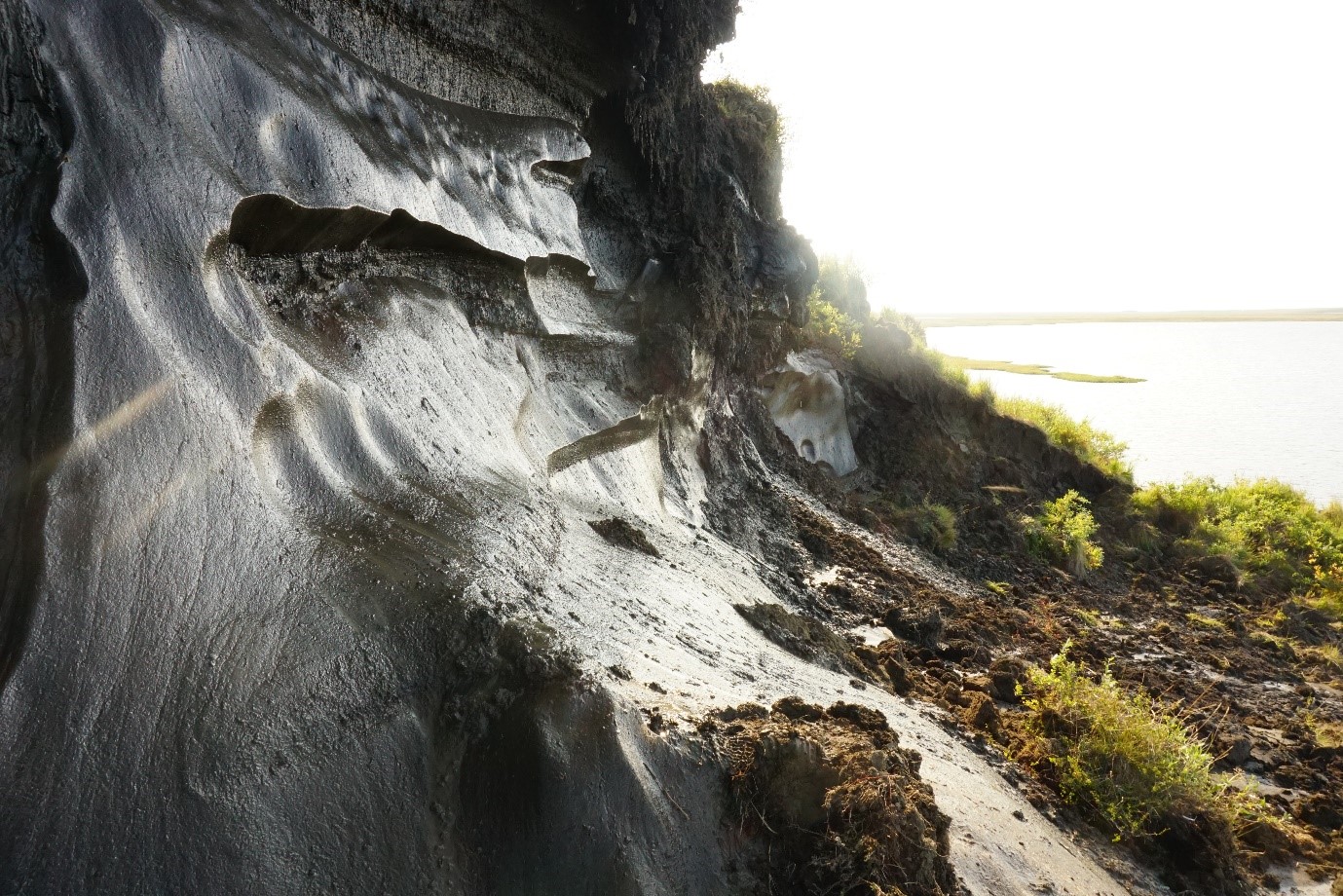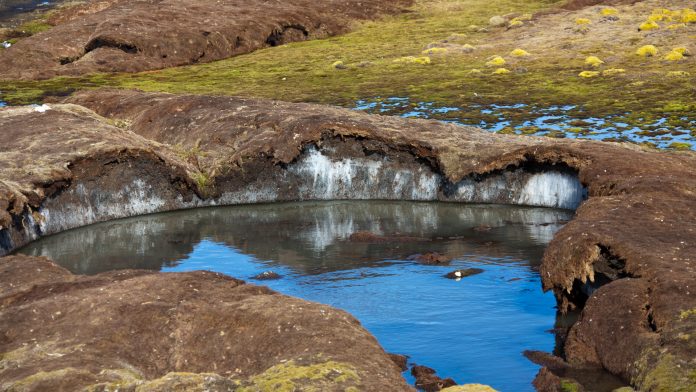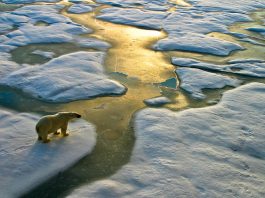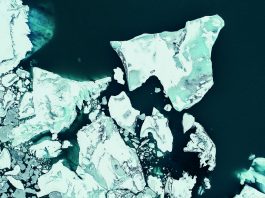A research team from Wageningen University and Research (WUR) has discovered an increased acceleration in the rate that the Arctic permafrost is thawing.
Why is the Arctic permafrost thawing?
In the past 50 years, the Arctic region has been warming three times faster than the average rate of global warming. This has resulted in the Arctic permafrost thawing the typically permanently frozen Arctic soil.
This new research has been published in Nature Communications and has revealed that extreme summer rainfall is accelerating the process. As extreme rainfall events become more frequent due to the warmer climate, the permafrost may thaw even faster than under the influence of rising temperatures alone.
What is permafrost and why is it important?
Permafrost forms the foundation of Arctic ecosystems and the settlements of humans who live on it. When the permafrost thaws, the soil loses its load bearing capacity, as a result, the organic carbon stored in the frozen soil decomposes more easily into greenhouse gases, such as CO2 and methane, which contribute to global warming. The release of greenhouse gases through permafrost thaw causes what is known as a ‘positive feedback loop,’ which is a self-reinforcing process.
Furthermore, in addition to the temperature, the precipitation in the Arctic region is also escalating. In winter, this has a negative impact on the permafrost. A thicker layer of snow in winter has an insulating impact and protects the permafrost from extremely cold air, so it does not cool as much. But little was known about the effect of precipitation in summer.

Photo: Rúna Magnússon
How were the effects of precipitation in summer studied?
Scientists from the Plant Ecology and Nature Conservation chair group of WUR carried out an irrigation experiment on the Northeast Siberian tundra to investigate the impact of extreme summer precipitation on permafrost.
PhD candidate Rúna Magnússon selected 20 monitoring sites and utilised sprinklers to give half the sites additional water. The experiment simulated the effects of an extremely wet summer. The sites were monitored for several years for permafrost thaw depth and other soil and vegetation characteristics.
From this experiment, it was discovered that, on average the permafrost thawed 35% faster in the irrigated sites, leaving a larger amount of soil susceptible to the decomposition of soil carbon into greenhouse gas.
Furthermore, an important finding was that the impact of an extremely wet summer lasted for several years; even two years after the sprinkler test, the permafrost under the irrigated sites was still thawing faster.
Additional model analysis in cooperation with researchers from Stockholm University revealed that permafrost thaws particularly rapidly during periods of combined high rainfall and high air temperatures.
“We were not surprised that the permafrost thawed to a greater depth during wet summers, but that the effect would be so extreme and last for several years was really unexpected,” explained Magnusson.
Can these negative effects be negated?
As rainfall is expected to increase and precipitation extremes will become more frequent in warming Arctic regions, these results hold negative connotations for the permafrost.
“If we only take warmer temperatures into account, we will underestimate how much permafrost is thawing as a result of climate change, and how much extra CO2 and methane is being released.
“But it is difficult to realistically represent the effect of such precipitation extremes on permafrost thaw and greenhouse gas emissions in climate models. This could lead us to underestimate future greenhouse gas emissions caused by permafrost thaw, and therefore our emissions targets to stay within the one-and-a-half or two degrees of global warming may turn out to be too optimistic,” concluded Magnusson.
The scientists hope that future research will reveal the extent to which the sensitivity of permafrost to rain varies regionally, so that more reliable estimates of future permafrost thaw can be made.
To keep up to date with our content, subscribe for updates on our digital publication and newsletter.





